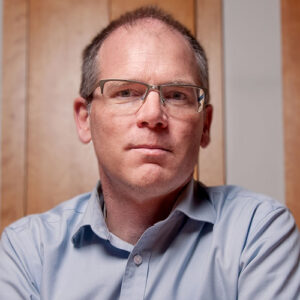
Canada has a strong non-partisan federal public service. Yet its protective boundaries mean it can be impermeable to outsiders, including academics seeking to study and contribute to it. This protective shell long encouraged a very particular approach in Canadian public administration studies, one I call the “lone wolf” approach. But the lone wolves are fading away, with little to replace them.
Lone wolves research and write on their own, working with their own ideas. For a long time this was the norm throughout much of the social sciences and humanities, and different from the hierarchical labs and teams found in other disciplines.
Academia today is becoming more and more open and collaborative, assisted by technology and encouraged by the federal government’s own grant agencies. But governing institutions struggle to open up themselves.
This insularity historically encouraged lone wolves, who built individual relationships of trust that got them inside the protective boundaries. But as governance grows ever more complex, it has become harder to build those relationships.
For example, when I was a younger academic in 2011, I was invited to an event in downtown Ottawa meant to bring senior public servants and academics closer together.
As a career lone wolf who was studying public institutions, I left the event feeling deflated. I felt unequipped to build a relationship with deputy ministers who managed thousands of people and had big ideas about big projects. I was an associate professor with just a few teaching assistants and some graduate students. What did we have in common? Yet I felt I had to forge these relationships with people at the top, because that’s what a lone wolf did.
Different worlds
Public servants sometimes don’t understand how much academics operate on their own. When I was starting my career 20 years ago, yearly invitations would be sent out from the Canada School of Public Service (CSPS) and its predecessor the Canadian Centre for Management Development for the University Seminar for public administration academics. For a couple of days, professors met in Ottawa with senior public servants to discuss public administration trends in the Government of Canada.
But there was a catch. You had to be nominated by your academic unit. Every year the letters got sent out to department chairs and deans to nominate faculty. And every year I had to intercept that letter to ensure it didn’t get lost. Because this is how a university works. Most deans and chairs didn’t know who was doing what in terms of Canadian public administration and wouldn’t understand the importance of this request.
More than once I tried to explain the flaw in their approach to the CSPS. But I don’t think they ever got it. They never seemed to understand that most of us operated independently and unsupervised as lone wolves, each out there hunting on our own, rather than working collaboratively or in an orderly hierarchy.
How contact is made
While it’s not always recognized, academics interact with government in two ways.
One is as experts. Academics are called on to present their research or bring specific skills to a project. The academics might get special access to data or pick up some ideas along the way. But the knowledge transfer is mostly one way, to government, and typically focused on a specific policy issue or area.
The second way is through relationships. Here, academics both bring and take information away, sometimes formally through reports, research interviews, etc. but also informally, through observation and casual exchanges. This is particularly the methodology for those who study government itself. They contribute to better administration, but also take away knowledge of its workings for their own publishing and teaching, and to exchange elsewhere for new information.
John Hannaford sets up public service teams to think about future problems
Exploring ways to bridge the gap between professors and the public service
My late master’s supervisor, C.E.S. (Ned) Franks from Queen’s University, was a lone wolf who was treated as an “expert.” But like many of his contemporaries his real method was relationships. He was constantly in touch with the institutions and people that he studied, gaining firsthand knowledge of how things really worked and trading information back and forth that further deepened his credentials.
This dynamic has always been circular.
To get sufficiently inside in the first place, academics have needed to build relationships that established trust and gave them the necessary access inside the protective walls of the career public service. But building those relationships was tough, as my 2011 Ottawa meeting underscored.
All this was a solitary endeavour. Relationships and knowledge were personally acquired and nurtured. Government sought out individuals, not teams, encouraging the already natural lone-wolf tendencies of academia.
When it did try to interact with academics as a group, such as through the University Seminar, the very hierarchical public service struggled to understand how academia worked, and how much even junior scholars operated on their own.
To get ahead, one had little choice but to hunt as a lone wolf, building and expanding your own contacts and access. The more you did, the more you were rewarded.
There is, of course, something deeply gendered about the lone wolf, proudly independent and relying on no one. There are some women scholars who also worked this way. But in the end, most lone wolves were white men who studied and interacted with the institutions of white men, interpreting the subtle codes and culture embedded in them.
There is insight in the lone-wolf tradition. There is also a risk of echo chambers and repetition. The more that knowledge depends on personal access and relationships, the more it will inevitably begin to reflect back the same thinking and avoid challenging it too strongly, lest it damage future access and relationships.
Is this the moment for a national Master’s in Public Administration and Public Policy?
This is not to say lone wolves were compromised or pulling their punches; many of them had the guts to be very critical of government and the public service. Still, the lone-wolf approach can be insular. And it is poor at succession planning.
In any event, it’s hard to be a lone wolf these days. The governing environment only gets more complicated. Traditional elite networks are fading away. Public servants seem ever more reticent to be frank with outsiders.
Yet, the Canadian public service often doesn’t seem to know what else to do with academics beyond the one-way “expert” model that is ultimately built on personal trust and relationships, perpetuating the lone-wolf approach.
Alternatives to the lone wolf
There should be more opportunities for professors to spend time in government. Most haven’t because there’s been little or no opportunity to do so. Interchanges and similar placements are few, intermittent, and rarely or never advertised. They are generally by invitation and rely on previous relationships and reputations as “experts”: the cyclical effect that again rewards the lone wolf. Philippe Lagassé and Thomas Juneau have lamented the shortage of interchange programs and the consequent lack of cross-fertilizing knowledge.
The public service could also actively seek out teams of junior scholars early in their careers and give them projects. This would be an investment in talent early on rather than waiting for them to mature as “experts.” If the public service seriously wants to be understood and strengthened by outside expertise, it needs to invest more in building up that expertise beyond rewarding the hustle of individual lone wolves.
This is how I benefited from the long-dead Canadian Centre for Management Development, which for a while expressly hired junior scholars for projects. I was hired as an individual, and my relationships dissipated with the centre’s demise.
But what if I had been part of an organized team of peer academics? What if we had had the opportunity to build a project together? To learn from each other rather than individually operating as “experts”? What if we could have continued the momentum if and when our public service contacts moved on?
Similarly, the University Seminar could return in a new and less secretive form that prioritizes collaboration and building up a new generation of scholars.
But all these require an attitude change: one allowing for greater penetration of the cautious and protective walls of the public service, and one that is prepared to take risks and be challenged by outsiders. Despite occasional talk, the system seems to be moving farther away from that possibility.
The lone wolves are mostly gone, but the Canadian public service still seems to have a weak grasp of how academia works. In return, most academics know less and less about how government works. Both are poorer for it.









